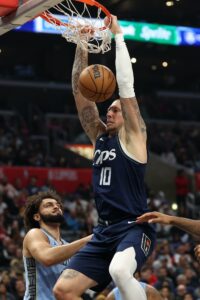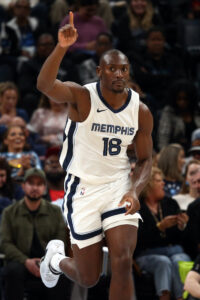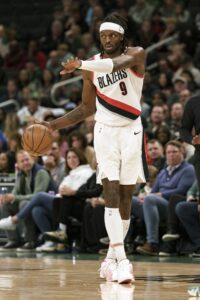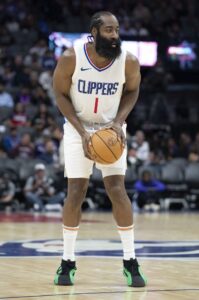As we explained when we identified the players who will become trade-eligible on unique dates this season, there’s a small group of players whose trade restrictions won’t lift until sometime after the February 8 trade deadline. These players meet one of the following criteria:
- They signed a free agent contract or were promoted from a two-way contract after November 8.
- A player who signs a free agent contract or is promoted from a two-way contract is ineligible to be traded for at least three months.
- They signed a veteran contract extension (meeting certain criteria) after August 8.
- A player who signs a veteran extension that keeps him under contract for more than three total years (including his current contract) and/or includes a raise exceeding 5% is ineligible to be traded for six months.
- They signed a super-max contract.
- A player who signs a super-max contract (also known as a designated veteran contract) is ineligible to be traded for one year.
We identified all the players who fell into these three categories in our previous story on unique trade dates, but they may have slipped through the cracks amid the larger list of players we discussed in that article.
With that in mind, we want to specifically single them out today to make sure it’s clear which players won’t become trade-eligible at all until sometime after the 2023/24 regular season.
Here are the players who fall into the three aforementioned groups and who can’t be traded this season:
Players who have signed free agent contracts since November 8:
 Taj Gibson (Knicks)
Taj Gibson (Knicks)- James Johnson (Pacers)
- Skylar Mays (Trail Blazers)
- Joshua Primo (Clippers)
- Daniel Theis (Clippers)
- Juan Toscano-Anderson (Kings)
There hasn’t been a ton of action on the free agent market since the regular season began, with most players who have signed with NBA teams receiving two-way contracts rather than standard deals. But the Knicks and Pacers reunited with old friends Gibson and Johnson, respectively; the Blazers promoted Mays from his two-way deal; the Clippers added Primo and Theis to their standard roster; and the Kings filled an open roster spot by signing Toscano-Anderson.
All of those players are ineligible to be moved this season, and this list will continue to grow if more free agents sign standard contracts between now and February 8.
Players who have signed veteran contract extensions meeting certain criteria since August 8:
- Giannis Antetokounmpo (Bucks)
- Zach Collins (Spurs)
- Josh Hart (Knicks)
- Miles McBride (Knicks)
- Jarred Vanderbilt (Lakers)
While the Bucks never would have traded Antetokounmpo this season, the other four players might have emerged as viable candidates to be moved if they hadn’t signed new extensions. Now, they’re ineligible to be dealt until the 2024 offseason.
It’s not uncommon for some players who are eligible for in-season veteran extensions to sign new deals well into the season, as McBride did over the weekend, so it’s certainly possible more names will be added to this group before February’s trade deadline.
Players who have signed super-max contracts:
- Jaylen Brown (Celtics)
Brown signed his designated veteran extension on July 26, 2023, which means he won’t become trade-eligible until July 26, 2024.
No other players will join the Celtics wing on this list prior to next month’s trade deadline, since super-max deals can’t be signed during the season.
 January 10 is the date that all
January 10 is the date that all  A significant portion of the NBA’s offseason signees became eligible to be traded
A significant portion of the NBA’s offseason signees became eligible to be traded  A player with at least three years of NBA service under his belt can be assigned to the G League, but it requires the player’s consent and a sign-off from the players’ union. Most of the time, these assignments are for injury rehab purposes, like when the Cavaliers sent
A player with at least three years of NBA service under his belt can be assigned to the G League, but it requires the player’s consent and a sign-off from the players’ union. Most of the time, these assignments are for injury rehab purposes, like when the Cavaliers sent  One good recent example of salary aggregation came when the Clippers
One good recent example of salary aggregation came when the Clippers